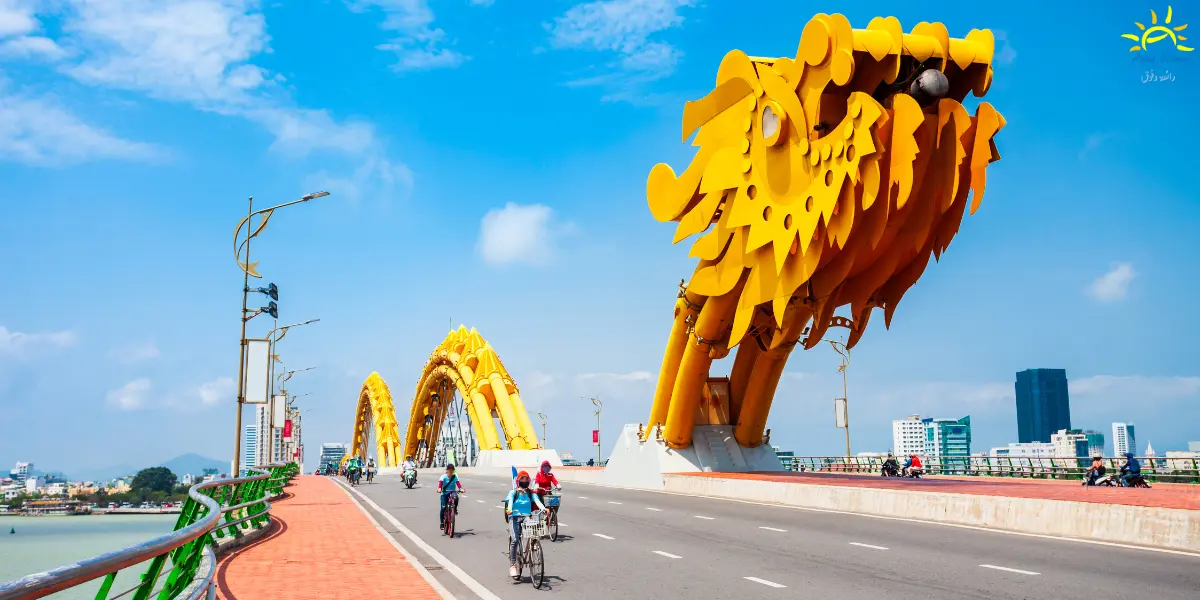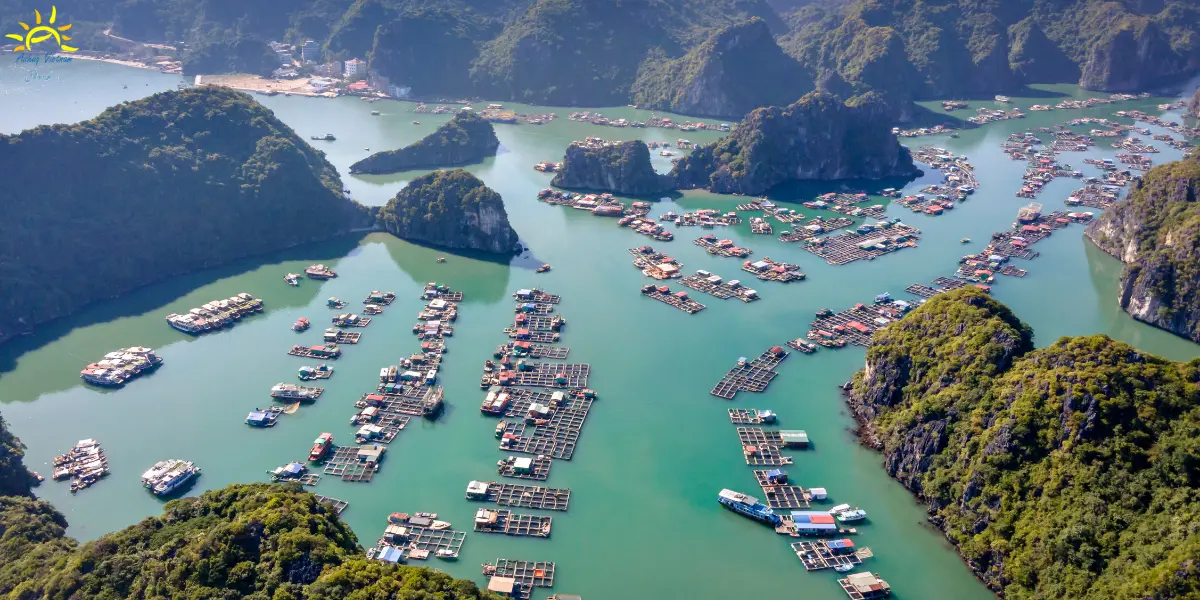Safety of the natural environment in Vietnam and Thailand
Before you decide whether to travel to Vietnam or Thailand next, evaluate which natural factors might impact your safety and when.
Climate and weather
Vietnam
Monsoon, geography, and terrain configuration are factors that influence the weather and climate of Vietnam the most. The result is that the subtropical north of this Southeast Asian country has completely different weather from its tropical south.
Average temperatures are high countrywide, with possible variations in the north (Hanoi), and central parts (Da Nang) to a certain extent. So, in winter, you are likely to need a winter coat in the north, which you can substitute with a jacket in Central Vietnam. Southern regions (around Ho Chi Minh) are typically hot year-round.
Rainfall is another parameter you should take into safety consideration before organizing your trip to Vietnam. Southwest monsoon brings heavy rains typically in the second part of the year, which may come earlier depending on the region.

In general, you should expect a wet season from late spring to early autumn in North and mid-autumn in South Vietnam. We can say pretty much for inland areas bordering Cambodia and Laos. In central regions accessing the South China Sea, you’ll need a raincoat from early autumn to early winter.
As for regions to the south, rain shouldn’t surprise you from late spring to mid-autumn.
Thailand
Unlike its eastern competitor, Thailand features exclusively tropical climate. Seasonal temperature fluctuations, however, tend to occur in northern parts of the kingdom (Chiang Mai and Chiang Rai). Central parts, around Bangkok, feature hot temperatures year-round, as well as Peninsular Thailand and southern islands.
So, feel free to pack light when visiting the kingdom, and add a jacket for winter in northern areas.
The same monsoon that brings rain to Vietnam will welcome you throughout the Thai realm, as well. So, have an umbrella under one arm and a parasol under the other from May to October.
Thai vs Vietnam climate breakdown
If you ask yourself how the climates of these two Southeast Asian nations look like when put in numbers, please refer to the following tables.
The Socialist Republic of Vietnam
| Destination | Average Min. and Max. Temperatures (°C/°F) | Average Min. and Max. Precipitation (mm/in) |
|---|---|---|
| North (Hanoi) | Winter: 15/59 – 22/72; Spring: 19/66 – 32/90; Summer: 26/79 – 33/91; Autumn 20/68 – 32/90 | Winter: 20/0.8 – 25/1; Spring: 45/1.8 – 190/7.5; Summer: 240/11.4 – 320/12.6; Autumn: 45/1.8 – 265/10.4 |
| Center (Da Nang) | Winter: 19/66 – 26/79; Summer: 25/77 – 34/93; Spring: 22/72 - 33/91; Autumn: 22/72 – 32/90 | Winter: 35/1.4 – 200/7.9; Spring: 20/0.8 – 65/2.6; Summer: 85/3.3 – 105/4.1; Autumn: 350/13.8 – 615/24.2 |
| South (Ho Chi Minh) | Winter: 21/70 - 33/91; Spring: 24/75 – 35/95; Summer: 24/75 - 32/90; Autumn: 23/73 – 31/88 | Winter: 5/0.2 – 50/2; Spring: 10/0.4 – 220/8.7; Summer: 270/10.6 – 310/12.2; Autumn: 115/4.5 – 325/12.8 |
The Kingdom of Thailand
| Destination | Average Temperatures (°C/°F) | Average Min. and Max. Precipitation (mm/in) |
|---|---|---|
| North (Chiang Mai) | Winter: 14/57 – 32/90; Spring: 19/66 – 34/93; Summer: 24/75 – 33/91; Autumn: 19/66 – 32/90 | Winter: 10/0.4 – 20/0.8; Spring: 20/0.8 – 155/6.1; Summer: 115/4.5 – 225/8.9; Autumn: 50/2 – 200/7.9 |
| Center (Bangkok) | Winter: 21/70 – 33/91; Spring: 25/77 – 35/95; Summer: 25/77 – 33/91; Autumn: 23/73 – 32/90 | Winter: 10/0.4 – 30/1.2; Spring: 30/1.2 – 220/8.7; Autumn: 50/02. – 345/13.6 Summer: 150/5.9 – 195/7.7; |
| South (Phuket) | Winter: 23/73 – 32/90; Summer: 24/75 – 31/88; Spring: 24/75 – 33/91; Autumn: 24/75 – 31/88 | Winter: 35/1.4 – 80/3.1; Spring: 75/3 – 295/11.6; Autumn: 195/7.7 – 325/12.8 Summer: 215/8.5 – 265/10.4; |
| South (Koh Samui) | Winter: 24/75 – 30/86; Summer: 25/77 – 32/90; Spring: 26/79 – 33/91; Autumn: 24/75 – 77/90 | Winter: 40/1.6 – 190/7.5; Spring: 55/2.2 – 170/6.7; Summer: 120/4.7 – 145/5.7; Autumn: 140/5.5 – 465/18.3 |
Natural Disasters
Typhoons (cyclones) are the main safety concern in the coastal regions of Vietnam during the monsoon season. These are especially severe in Northern Vietnam. Accompanying floods and landslides are also possible during this period.
Typhoons causing floods and landslides do reach Thailand, as well. However, these are less severe due to the kingdom’s sheltered position. In northern Thailand, earthquakes of different magnitudes tend to happen from time to time.
Food and Drink
If you worry about the safety of your stomach, be at ease when visiting Thailand or Vietnam. While Vietnamese food and Thai food is affordable, delicious, and safe, in general, you may wish to practice caution in some cases.
When wishing to drink a cup of coffee, you should avoid nondescript places in the socialist republic. These tend to maximize their profits by adding some components that won’t improve your health. Buy street food from busy vendors both in Thailand and Vietnam since these likely pay attention to hygiene.

In warm areas in both countries, it would be prudent to smell salads and rice before you start eating. Furthermore, eat salads and fresh vegetables at reputable establishments only, since they stick to safety procedures tightly. Also, prioritize hot dishes in either country since cold ones might contain bacteria your stomach would disapprove.
As for tap water, avoid it altogether when touring Vietnam. In Thailand, tap water is typically safe at eateries and hotels in large cities. While traveling elsewhere, buy bottled water.
Public safety and security in Vietnam and Thailand
Both the Thais and Vietnamese authorities practice a high level of public safety. However, some categories of locals have their own opinions on what is safe and what not. Drivers in Thailand are the perfect example.
General public security
As we have implied, travelers are quite safe when visiting Thailand and Vietnam. Crimes such as theft, bag snatches, frauds, and petty scams are always possible. However, these are avoidable if you pay attention and practice basic safety precautions.
In the Republic of Vietnam, these concerns extend to roaming the countryside. While roads in constant use and cultivated areas don’t pose a risk, avoid going elsewhere. Mines, rockets, and other unexploded ordinance remaining from the 20th-century wars may infest remote areas.
Foreign travelers seldom find themselves under assault in either country due to high public security. Therefore, you should be safe whether you travel in a group, with a friend or partner, or alone.
Road safety
Driving in the Thai Kingdom is highly adventurous, to put on a pretty face to it. As a result, roads in this part of Southeast Asia are among the least safe in the world.

Therefore, travel with a reputable provider whenever possible and practice utmost caution if driving. While there are Vietnamese drivers who seem to have a Thai driving instructor, road safety in Vietnam is much better.
Seaside
Enjoying the seaside is among the reasons travelers go to these two nations in Southeast Asia. And this is perfectly safe so long as you keep certain things in mind.
Avoid swimming and other activities in the water during storms, both in the kingdom and socialist republic. Also, you shouldn’t swim alone. Pay attention to signposts indicating areas safe for swimming and practice seaside activities when other people are around you.
Jellyfish, stonefish, and other marine inhabitants you wouldn’t like to encounter live in the South China Sea, Andaman Sea, and the Bay of Bengal. Although these usually stay away from humans, be vigilant when swimming and diving.
Healthcare
Both Vietnam and Thailand have reliable healthcare centers in large cities. Regarding medical assistance, the kingdom features one of the best healthcare services in Southeast Asia. While Vietnam state facilities improve in this regard continually, private clinics provide various treatments to local and foreign residents.
Note that free medical assistance for patients that aren’t Thais or Vietnamese isn’t an option. Hence, you should obtain health insurance before your trip to either country.
Summary
So, is Vietnam better than Thailand of safety? To sum it up, it is, although not by much. At least so long as you avoid exploring the countryside in the republic.
While the Kingdom of Thailand has first-class medical care, Vietnam’s private sector doesn’t fall behind. The safety risk is somewhat higher on Thai than Vietnamese roads.
Crime rates against travelers are low in either country of Southeast Asia. Still, they are a bit higher in Thailand since more travelers visit the kingdom.
Bad weather and natural disasters aren’t a major safety concern if you are up to date and don’t take unnecessary risks. So, whether you plan to visit one or both nations during your next trip, you are highly unlikely to worry over how safe you are.
Super deals from October to December !!!
For the first time in the history of Love Vietnam, we offer free visa and fast track at the airport for customers who book private tours with our company at a reasonable price, which is why we launch this promotion in the period from October to December because these are the peak months, so all services will be higher than usual and to create opportunities for tourists to travel to Vietnam at reasonable prices. We offer this very good offer to our customers. Note that this offer does not apply to holidays and Christmas.
We are committed to this is the only promotion program and the first time in the history of the tourism industry in our company. Seize this opportunity and book a tour with us for an unforgettable trip in #Vietnam with us 🌾🇻🇳✈️🌧️
For more information about the program, please contact: ASHAQ Vietnam
98 To Ngoc Van, Tay Ho, Hanoi
Hotline: 84 398326010
Fanpage: https://www.facebook.com/ashaqvietnam
Website: https://ashaqvietnam.com/



